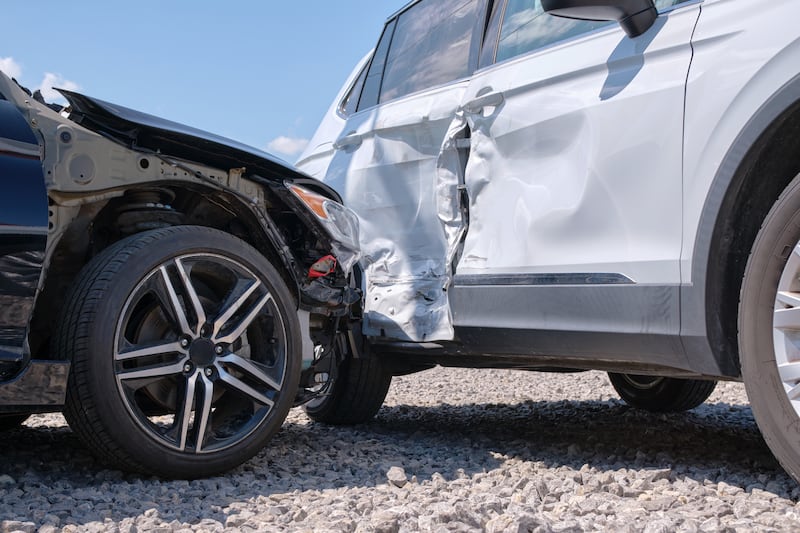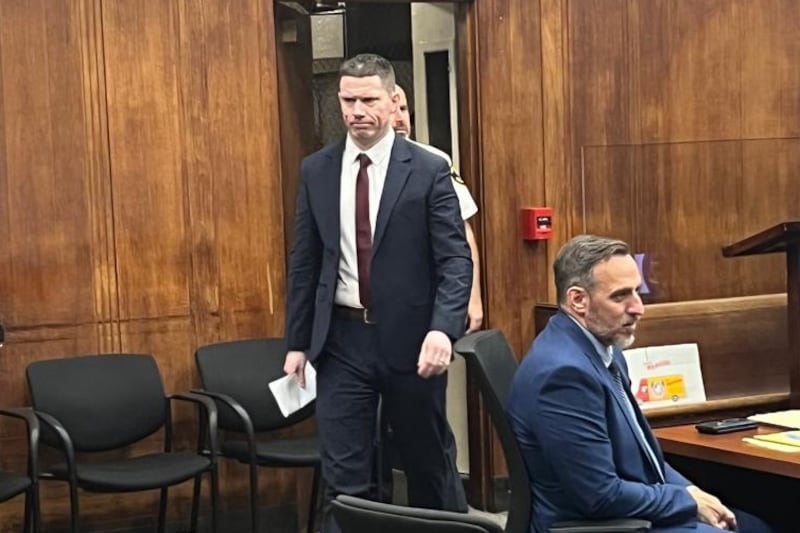The sky was deceptively blue. As Air Force Two awaited departure at Andrews Air Force Base just outside Washington DC, news came through of fog at New Haven. But while the vice-presidential trip to Connecticut was put back by a few hours, Kamala Harris was in no rush.
The stately stream of black SUVs drove smoothly on to the tarmac, and the vice-president stepped out of the vehicle, her beaming smile just visible beneath her mask.
With the engines whirring, she stopped to chat with a US air force lieutenant colonel, before ascending the steps, turning and saluting. Ten minutes later we were off, leaving the skyline of the nation’s capital behind.
Air Force Two is the plane used to transport the vice-president of the United States. The modified 757 comprises an enclosed office space at the front of the plane – hidden from view behind a vice-presidential seal. The rest of the cabin is divided into three sections, including a space for the media – in this case a small group of journalists accompanying Harris on the trip.
Her importance as a role model is all the more significant given her proximity to the highest office in the land. It has long been said that the vice-president is one heartbeat away from the presidency
Though the soft browns of the interior are a throwback to a previous era of air travel, subtle vestiges of presidential power are evident. The seat belt buckles are imprinted with the presidential seal. Coffee is served in ivory styrofoam cups with “United States of America” embossed in gold. On this one-hour flight, CNN is playing discreetly on the small televisions dotted around the cabin as secret service officers patrol the aisle.
As the vice-president tells us when she joins us in the media cabin for an off-the-record chat, this is the final trip of her Help is Here tour – a series of visits around the country to promote the Biden administration’s $1.9 trillion American Rescue Plan.
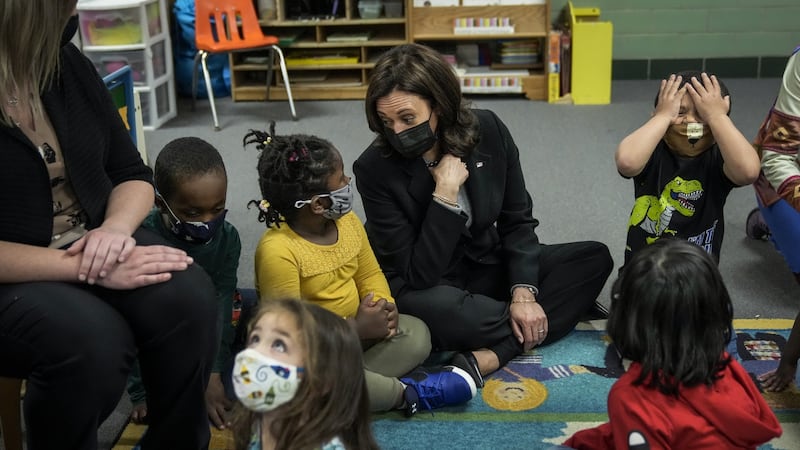
Shortly after she made history as America’s first woman and woman of colour to serve as vice-president, Harris described how she and her husband would have those pinch-me moments – times when she could not believe she was the vice-president of the US.
Not any more. As Air Force Two touches down at New Haven, a line of dignitaries and local officials line up to meet her. Hundreds more can be seen waving flags in the distance. The doors open and she steps out on the jet bridge, head held high, face towards the sky – a vice-president poised and ready for the day ahead.
It's been quite a journey for the former senator for California. In February 2019 I drove to South Carolina. The Iowa caucuses were still a year away but the presidential election campaign was heating up. Kamala Harris had announced her run for president the previous month – along with Elizabeth Warren, Amy Klobuchar and Kirsten Gillibrand, she was one of four female US senators to run for the Democratic nomination.
Though only in the US Senate for two years, Harris had shot to national fame through her questioning of Trump appointees, such as attorney general Jeff Sessions and future supreme court justice Brett Kavanaugh.
The venue was a small local community centre on the outskirts of Columbia – an ordinary location representing an average slice of the US on a Saturday afternoon. As Harris took to the stage, she introduced herself to the crowd, presenting her backstory, which would become a familiar narrative on the campaign trail. How her parents, both immigrants, had met during the civil rights movement of the early 1960s. How she was raised by her mother, a cancer researcher, after her parents divorced. Her work as a district attorney and then attorney general for California.
Even at this stage, there was a buzz in the hall. Hundreds had queued for hours to hear her. Harris's decision to campaign in South Carolina was no accident – the state had the highest percentage of African-American voters of all the early-voting states. Ultimately, Joe Biden's popularity among the black community, and a crucial endorsement from local congressman and civil rights icon Jim Clyburn, would deliver him South Carolina a year later, effectively winning him the Democratic nomination.

Many of those gathered at the centre were black. As we awaited her arrival I spoke to three generations of black women. Speaking over the hip-hop music that blared from the speakers as we waited, they described their optimism about the possibility of the first black female president. “Democrats take our vote for granted sometimes here in South Carolina. It’s about time we had someone representing us at the table,” said Emily, a local care worker, there with her mother and grandmother.
Utimately it was not to be. By December 2019, two months before the Iowa caucus, Harris had dropped out of the race. Describing it as “one of the hardest decisions of my life,” she announced that she simply did not have the financial resources to continue. In a crowded field, she had found it difficult to stand out. Her mixed messaging on healthcare was a death knell for her campaign. Having initially suggested eliminating private healthcare insurance by embracing “Medicare for all” during an early debate, she later equivocated.
But it was her clash with Joe Biden during the first Democratic debate that was the stand-out moment of the nomination battle. Harris took on the former vice-president for his opposition to "busing" in the 1970s, a policy of transporting children to different schools to increase racial diversity.
Describing a “little girl in California” who was one of the first pupils to benefit from busing in the state, Harris delivered the killer line: “That little girl was me.” Though the viral moment gave Harris a short-term cash boost from donors, it was not enough to salvage her campaign.
The fact that they both put their public clash behind them was testament to their openness and willingness to move on
A little over a year after that infamous clash, Biden chose Harris as his running mate. Harris brought obvious benefits to his campaign – while Biden had been chosen by Barack Obama as a voice of experience and to appeal to white male voters, the situation was now reversed. Harris (56) brought generational, gender and racial diversity to the Biden ticket. The fact that they both put their public clash behind them was testament to their openness and willingness to move on.
While Biden’s wife, Jill, was reportedly still cautious about Harris after the busing incident, Harris had a personal connection with the Biden family. She had been close to Joe Biden’s eldest son Beau when both were state attorneys general before Beau’s death from cancer in 2015 at the age of 46.
More than two months after Joe Biden and Kamala Harris took the oaths of office on the steps of the US Capitol and as the four years of the Trump presidency fades from view, Americans are learning more about how the Biden-Harris administration intends to govern.
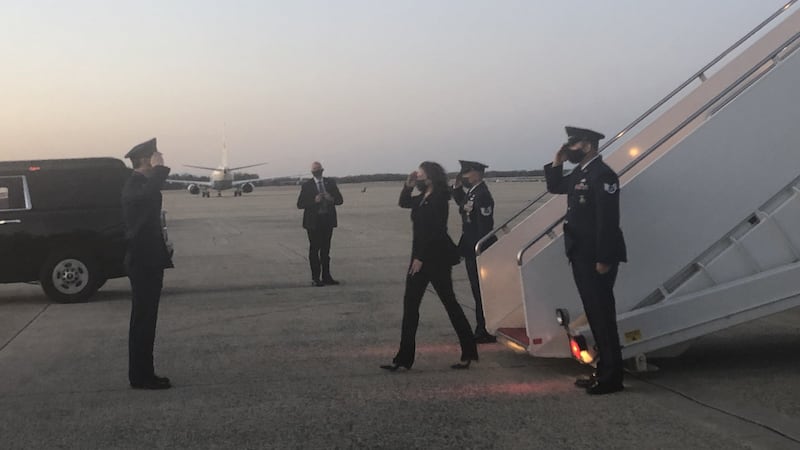
Here in Connecticut, Harris has a busy day of events. After landing, a motorcade transporting the vice-president, media and security weaves through the small streets of West Haven, escorted by dozens of police on motorcycles. Though most of the people who come to watch the entourage zoom by cheer the passing motorcade, the odd Trump 2024 flag can be seen. “Republican area,” says our driver.
Our day trip to New Haven comprises two stops, one at the local boys and girls after-school club and the second at an early years learning centre. As with any political visit, there are photo ops aplenty. Connecticut’s governor and two senators are there to meet the vice-president; a classroom of three- to five-year-olds are waiting patiently to welcome their special guest. As they sit beneath a giant home-made sign with the words “Welcome Vice President Kamala Harris,” a Harris aide teaches the group how to pronounce her name – “comma-la,” not “ka-ma-la.”
A beaming Harris enters and takes a seat on the ground beside the children. “This is the best part of my day,” she tells them as they gather around. “I saw a police officer,” exclaims one five-year-old. “How do you like being the vice-president?” asks another. “I kind of like it,” says Harris as the cameras click.
The aim of the visit is to highlight how the American Rescue Plan – the $1.9 trillion economic package recently agreed with Congress – addresses child poverty.
In a televised speech to teachers and school officials, Harris claims the plan will lift half of US children out of poverty. It’s a bold assertion– but one that Biden officials say is achievable through the expanded child tax credit, a centrepiece of the new legislation.
The child credit – which according to estimates will cost more than $100 billion – is being hailed by many as a game changer akin to the extension of social security to senior citizens during the New Deal era, which ultimately helped to bring millions of older Americans out of poverty.
Biden’s $1.9 trillion stimulus package provides the largest injection of cash targeted at lower- and middle-income Americans in decades. In this sense it captures a central irony of the new administration – that Biden, the least radical of presidential candidates, is presiding over one of the most progressive policy initiatives in decades.
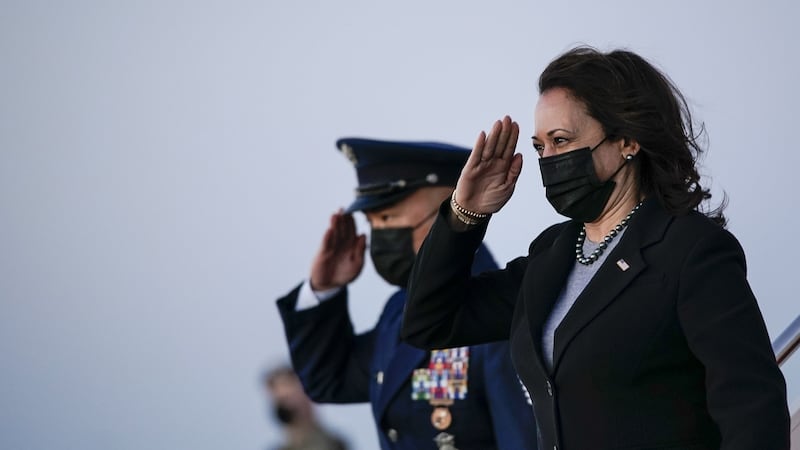
Biden, whose persona as a centrist helped him win the Democratic nomination, is now tacking more to the left than some of his primary challengers, such as Elizabeth Warren and Bernie Sanders, could have imagined.
But this tilt towards a more liberal policy position tugs at an issue that has never quite been resolved for Harris. During her own run for president, she battled accusations from progressive Democrats that she was too tough on crime as a prosecutor in California.
Citing examples from her many years in law enforcement, critics argued that she refrained from pursuing investigations into police shootings of black men, and refused to intervene in the case of a man who was on death row and requested DNA testing.
Harris has hit back, asserting that she did significant work on reforming the criminal justice system and has always opposed the death penalty.
It is in stories such as these that the human side of Harris really shines through
In her autobiography she tries to reconcile these contradictions by denouncing “false choices” around criminal justice issues. Describing her decision to become a prosecutor she says: “For too long, we’d been told there were only two options: to be either tough on crime or soft on crime – an oversimplification that ignored the realities of public safety.”
Whatever the ideological contradictions of her decades of experience in office, here in Connecticut the progressive credentials of the administration’s priorities are on full display, as she touts the benefits of the American Rescue Plan for children.
Highlighting the role childcare workers play in society, she speaks about her own upbringing. She and her sister Maya often went to their neighbour Regina Shelton’s house after school while her mother worked. Describing how her mother had two passions – “raising her two daughters and curing breast cancer” – Harris said that the work she did as a researcher “would not have been achievable without Ms Shelton”.
It is in stories such as these that the human side of Harris really shines through. Her ability to connect with people is as much a part of her political success as her decades of experience as a lawyer and senator.
She talks often about her family and her upbringing. Her mother, who emigrated to the US from India in 1958 to study for a PhD at University of California, Berkeley, died from breast cancer in 2009, having worked her entire life to eradicate the disease. Her Jamaican-born father, who separated from her mother when the future vice-president was five, is still alive and an emeritus professor at Stanford University. She is extremely close to her younger sister Maya and niece Meena.
Harris's personal life was the subject of intense local media speculation when she was attorney general in California – Barack Obama once referred to her as the "best looking attorney general in the country," a remark for which he later apologised. In 2013 she met her future husband, Doug Emhoff, an entertainment lawyer, on a blind date in Los Angeles. They married the following year.
Though Harris and Emhoff do not have children, Emhoff’s two adult children from his first marriage, Ella and Cole, are close to Harris, whom they call “mom-ala”. Both attended the inauguration, where Ella’s Miu Miu coat went viral. Harris’s husband, who stepped down from his job following the inauguration, has embraced his new role as the US’s first “second gentleman” with gusto.
Like first lady Jill Biden, Emhoff has travelled around the country in recent weeks. The vice-presidential couple, who recently sold Harris's apartment in San Francisco and have a home in Los Angeles, currently reside in Blair House near the White House, while the official vice-president's residence at the Naval Observatory is being renovated.
While Harris has broken a glass ceiling by becoming the country's first female vice-president, there is also a racial dimension to her political ascent. Though Harris sees herself as Asian, Jamaican-American and black, she writes in her memoir that her mother "understood very well that she was raising two black daughters". Significantly, Harris chose to attend Howard University, a historically black college in Washington DC, an experience that she says cemented her identity as a black woman.
Her importance as a role model is all the more significant given her proximity to the highest office in the land. It has long been said that the vice-president is one heartbeat away from the presidency. Given Biden’s age, her role as an understudy is more in focus than in any recent administration.
In particular, Harris's lack of significant foreign policy experience has come under scrutiny. She now meets secretary of state Antony Blinken regularly for private lunches, and is being primed to meet several European leaders in the coming weeks.
As the visit to Connecticut wraps up for the day, and Air Force Two waits on the tarmac at New Haven, Harris takes her leave of the children at the West Haven centre. “I am positive there is one of them who will be president of the United States,” she says to parents as she departs. Her mind is already turning to the next focus of her vice-presidency: managing the migration crisis at the border.
As the sun begins to set behind the wings of Air Force Two, she strides up the steps of the plane and prepares for lift off. On to the next challenge.












